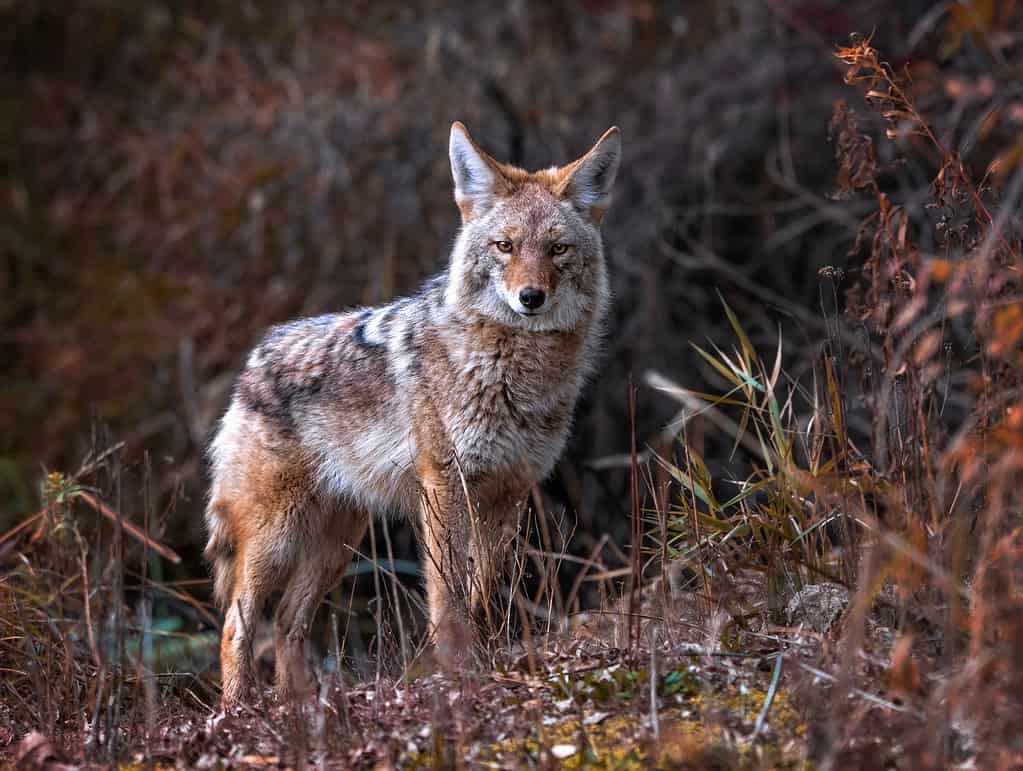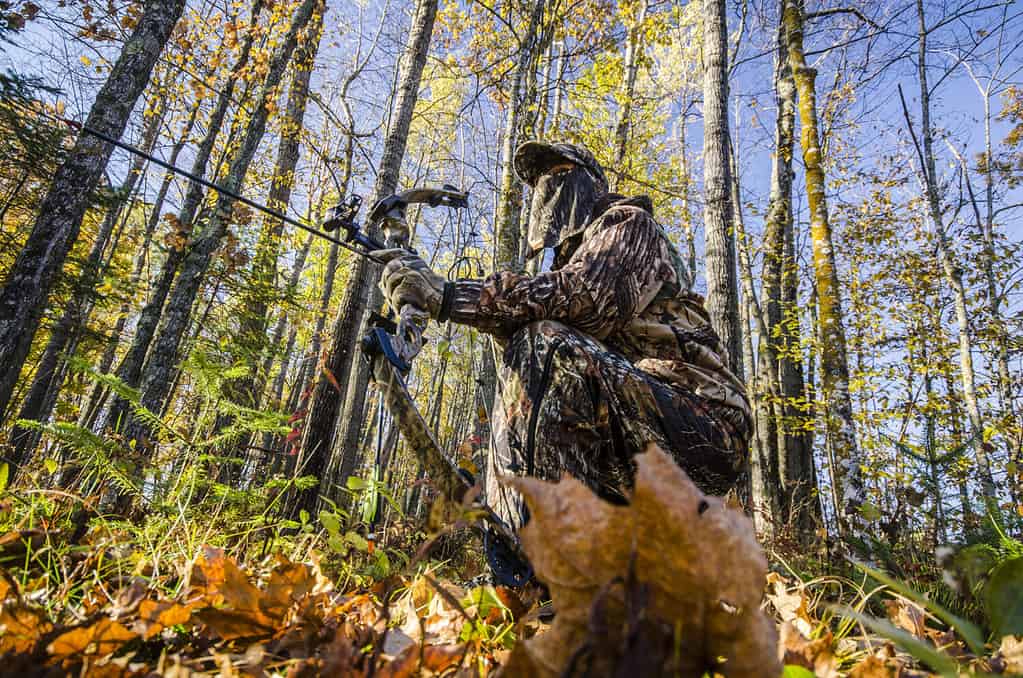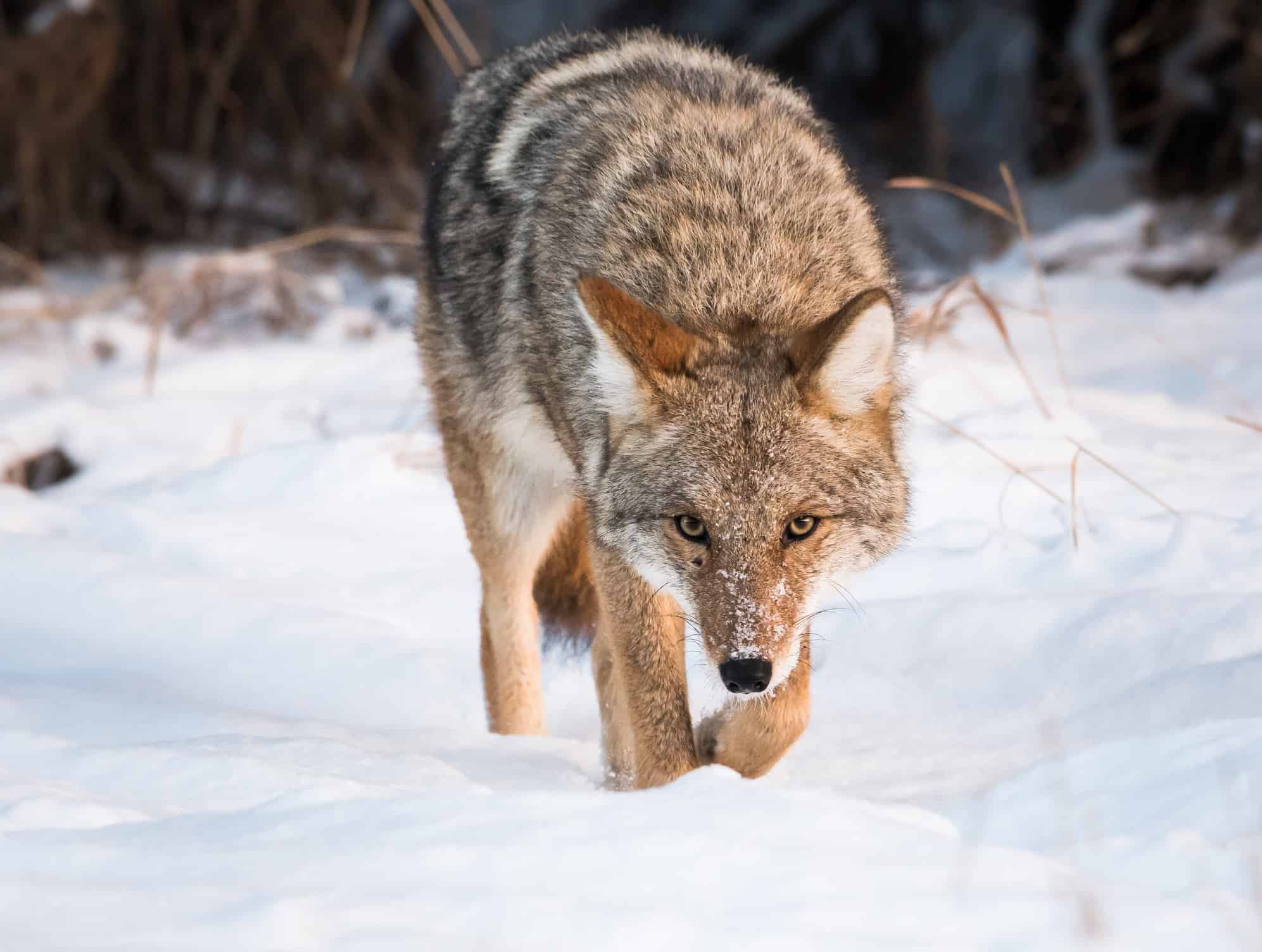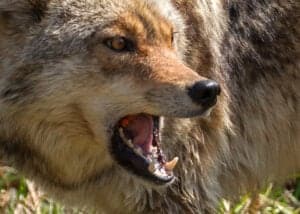Part of the canine family, coyotes reside in every state in the continental United States. Coyotes can adjust to both natural habitats, such as deserts, grasslands, and forests, as well as urban environments. A crucial predator that regulates smaller mammal populations, coyotes hunt rodents, skunks, raccoons, and foxes. Keeping these populations in check ensures biodiversity. However, high populations of coyotes can cause problems for farmers and city dwellers alike. Let’s look at coyotes in Missouri regarding their population size, common locations, and hunting rules in the state.
What Do Coyotes in Missouri Look Like?

Coyotes are medium in size, weighing between 18-30 in the Missouri area. Their coats are usually a mixture of tan, black, and gray, but they can sometimes be strawberry blond.
©graphicphoto/iStock via Getty Images
Coyotes are typically 39 to 54 inches long, with tails around 10 to 16 inches in length. On average, coyotes range from 18 to 30 pounds. Their upper body has a coat that is light gray or dull yellow, though the hairs are tipped with black. The legs, ears, and muzzle usually have a reddish tone. The tail is usually black-tipped or yellowish. From throat to belly, their coloring ranges from white to pale gray. But if you get close to a coyote, you will notice that the irises of their eyes feature a unique tawny color.
Coyote Distribution in Missouri
While their exact population in the state is unknown, coyotes are classified as common and thriving. Most abundant in the grassland habitat in northern and western Missouri, coyotes inhabit all 114 counties.
In 2021, experts estimated that coyote populations doubled in Missouri. With few coyote predators, they expect this trend to continue. More coyote sightings occur in cities, even in places such as downtown St. Louis. Because of food shortages in the winter, coyotes are becoming bolder and going where there is food.
Conflicts with Coyotes

Mating in the spring, coyotes have litters of between five to seven pups by May. The male and female coyotes care for the litter until the pups learn to hunt and survive on their own.
©Mircea Costina/Shutterstock.com
Because coyotes are opportunistic feeders, they cause the most problems for farmers and ranchers. Coyotes are notorious for making off with poultry and young pigs, as well as killing goats and sheep. While they don’t often kill small calves, a coyote’s persistent presence often stresses cattle that are contained. And, as omnivores, coyotes consume sweet corn and watermelon, causing damage to farmers’ produce.
But, because coyotes are incredibly adaptable, they cause problems in big cities and suburban areas as well. The biggest complaint is of coyotes killing or injuring pets. However, direct conflicts with humans don’t usually occur, as coyotes are wary of humans. If food is available, such as outdoor pet food or accessible garbage, coyotes may get close to the house for an easy meal.
And, around late April or May, after coyotes have their pups, they become more aggressive when protecting their dens from perceived threats. However, there have been no documented cases of coyote attacks on humans in Missouri.
Hunting Coyotes

While coyote hunting and trapping are allowed throughout the year, there are some restrictions when overlapping with turkey and deer season in Missouri.
©paul geilfuss/Shutterstock.com
Because coyotes are so common in the state, the Wildlife Code of Missouri classifies coyotes as furbearers and game mammals that you may hunt or trap during the respective seasons. However, you may also shoot or trap coyotes that cause damage out-of-season without a permit.
Hunting Season
Hunters may take coyotes all year, with exceptions specified on the Missouri Department of Conservation website, which change from year to year, so please be sure to consult it beforehand.
Pelts and carcasses of coyotes may be possessed and transported without limit throughout the year. However, there are some restrictions when it comes to overlapping hunting seasons. For instance, during spring turkey season, you may only hunt coyotes during the legal shooting hours for turkey season, exclusively using the hunting methods allowed during turkey season. Hunters must also possess an unfilled spring turkey hunting permit and a Resident Small Game Hunting Permit or a Nonresident Furbearer Hunting and Trapping Permit.
It is a similar restriction during Firearms Deer Season, where furbearer hunters must have an unfilled firearms deer hunting permit along with the resident or nonresident hunting permit.
Allowed Methods
The hunting methods allowed for coyotes are extensive, including many firearms, bows, slingshots, and more. However, there are specific methods that are prohibited in Missouri. For instance:
- Arrows may not be drugged, poisoned, or explosive.
- Motor vehicles may not be used to take or maltreat wildlife.
- Artificial lights are prohibited to search for coyotes, as they disturb surrounding wildlife.
- You cannot hunt coyotes on or across from a public road.
All in all, coyotes are becoming more than a nuisance in Missouri, and the state is encouraging hunters to pursue coyotes and help keep their population in check.
Thank you for reading! Have some feedback for us? Contact the AZ Animals editorial team.








